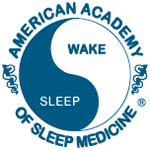 A recent study examined the risk of sleep-disordered breathing in children who had ear tubes inserted.
A recent study examined the risk of sleep-disordered breathing in children who had ear tubes inserted.The study from Israel involved 352 children with ear tubes. Another 105 children were included as controls. Parents were interviewed by phone.
Results show that sleep-disordered breathing was common in children who had ear tubes inserted. Twenty-two percent of parents reported that their child snores.
Tonsils had been removed from 18 percent of children with ear tubes. This surgery is a common treatment for obstructive sleep apnea in children. Thirty-four percent of children snored or had their tonsils removed after the ear tubes were inserted.
Children with ear tubes were four times more likely than controls to have future tonsil removal. Their risk for snoring was three times higher.
The authors reported that sleep-disordered breathing shares common mechanisms with Eustachian tube dysfunction. This tube extends from the middle ear to the throat.
They concluded that children who need ear tubes inserted are at risk for sleep-disordered breathing. Doctors should regularly check these children for symptoms of sleep apnea. This will allow for early detection and treatment.
MedlinePlus reports that ear tube insertion helps relieve fluid buildup behind a child’s eardrum. The tubes allow the fluid to drain so that the ears can function normally. Another name for the procedure is “tympanostomy tube insertion.”
It may be recommended when excess fluid in the ear does not go away after four months or longer. Tubes also may be inserted if an ear infection does not go away or if a child has many ear infections.
The AASM reports that about two percent of healthy young children have OSA. It occurs when soft tissue in the back of the throat collapses and blocks the airway during sleep.
Most children with OSA have a history of loud snoring. This may include obvious pauses in breathing and gasps for breath. Parents often notice that the child seems to be working hard to breathe during sleep.
Read more about obstructive sleep apnea in children. Get help at an AASM-accredited sleep center near you.
Image by Travis Isaacs







No comments:
Post a Comment